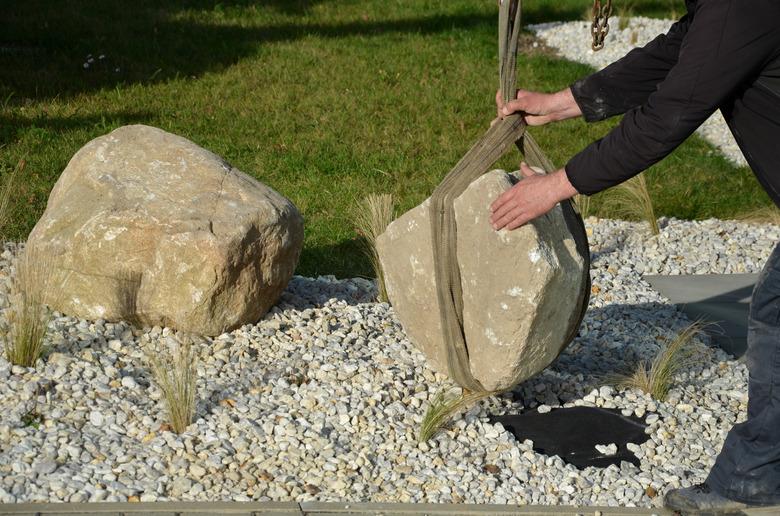Tricks To Move Large Rocks By A Single Person
One need look no further than ancient edifices constructed before the development of heavy machinery to see that it is possible to move large rocks with human muscle power. Archaeologists have long pondered the construction of the great pyramids of Egypt, marveling at the ingenuity involved in transporting such massive stones from quarry to building site, where they were then raised even further into place. Luckily, most modern people who need to move a large rock are not building a full-scale model of the Egyptian pyramids. For them, there are several methods available.
Use the Lever Principle
A lever can help you move heavy objects like large landscape boulders with less force using a properly placed fulcrum point. Almost anything sturdy can serve as the fulcrum, including another rock, a brick or chunk of wood. Place the fulcrum close to the rock that needs to be moved.
For a lever, find a sturdy length of wood or unbreakable metal rod, about 4 feet long. Lay the lever over the fulcrum and wedge the end of the lever under the rock. Then push the far end down, using the properly placed fulcrum to translate your muscle power into enough force to create movement.
Hoist for Moving Large Rocks
A common fence-building tool is a ratcheted hoist, which can also be employed to move large boulders. Attach one end to an immovable object like a tree or truck. The other should be fitted with nylon or canvas straps around the rock to be moved. By ratcheting the hoist, a single person can move the rock one small bit at a time using much less human force than if he were to walk up and simply try to drag the thing by hand.
Homemade Conveyor Belt
One method archaeologists suspect the pyramid-building Egyptians used was a crude but effective conveyor belt. A modern interpretation would involve placing several pieces of pipe horizontally in front of the rock in the direction you want to move it. Place a piece of plywood or several planks on top of the pipes. Lever the rock up onto the planks and then easily push it. The wood will roll along the pipes revolving beneath, carrying the load with it. As one pipe emerges out the back, stop for a moment and move it in front of the rock again.
Considerations for Moving Rocks
When using the lever or pulling method, make your job even easier by sliding the rock on top of a sheet of plywood. The resistance between the wood and ground will be much less than between the stone and ground, making it even easier to accomplish your task. If you don't have lever tools or a hoist, you can still simply arrange a rope or canvas sling around the rock, tie the sling to a vehicle of some sort and brute-force drag the rock to where you want it.
Rock Moving Safety
It's always better to have someone else around when moving large rocks. Even if they're not helping you lift the rocks, they can be there to call for help if you get injured. Have a phone nearby while you work to call for help.
Whenever you're lifting anything, whether it's the rock itself or tools to move the rock, lift using your legs and arms rather than your back. Squat down low instead of bending over at the waist. Using a proper lifting stance can help protect your back from serious injury.
Anticipate where the rock might move or roll to prevent injury and damage. Avoid pushing or pulling the rock too close to objects. If other people or pets are in the area, keep them away from your path in case the rock goes in a different direction.
